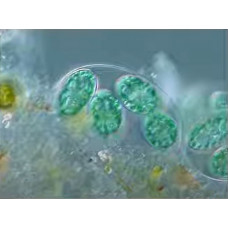From the Greek nanos - dwarf and plankton.
Nannoplankton are planktonic organisms with sizes less than 50 µm. These are bacteria, flagellates, and many algae.
A group of small planktonic organisms (bacteria, some unicellular algae, fungi and their zoospores) that pass through the fine cells of a silk plankton net (body length less than 0.05 mm). Nanoplankton are separated by centrifugation or sedimentation.
Nanoplankton is a necessary link in the food chains of hydroecosystems (zooplankton feed on them).
Small representatives of the following groups of eukaryotes are found among nanoplankton: Dinoflagellata, Kinetoplastea, Chlorophyta, Chrysophyta, Cryptophyta, Diatomeae, Xanthophyta.
The cells of nano- and picoplankton have a higher chlorophyll content than microplankton. Under an ordinary light microscope, representatives of nanoplankton are barely visible, and only when they are alive. They are not caught by the plankton net - they slip through the 10-micron eyes of the finest plankton sieve (gas). For these reasons, the role of nanoplankton in food chains has long been underestimated. As a rule, the researchers paid attention to the highly visible microplankton (> 20 µm), to which most of the diatom and dinoflagellate species described for the Black Sea belong.
A significant part (up to 98 %) of nanoplankton is made up of coccolithophorids. Their calcareous skeletons, which are part of bottom sediments, are often used to determine the age of rocks. Upper Cretaceous sediments consist mainly of skeletal elements of nanoplankton and, to a lesser extent, zooplankton.
Nanoplankton
Tags: nanoplankton

